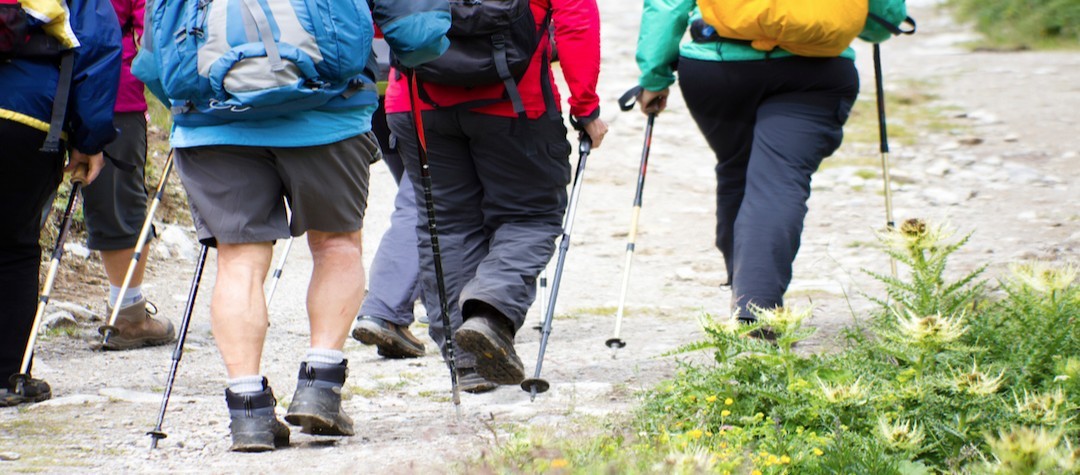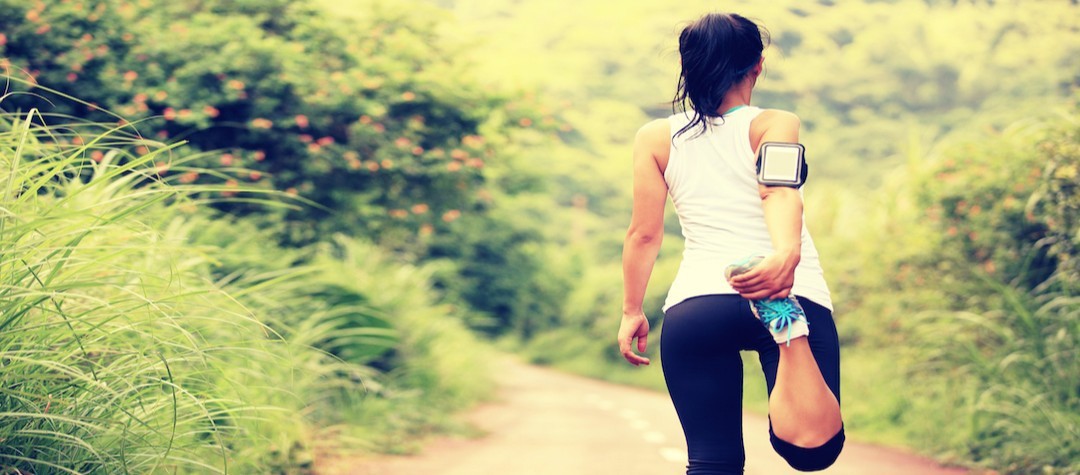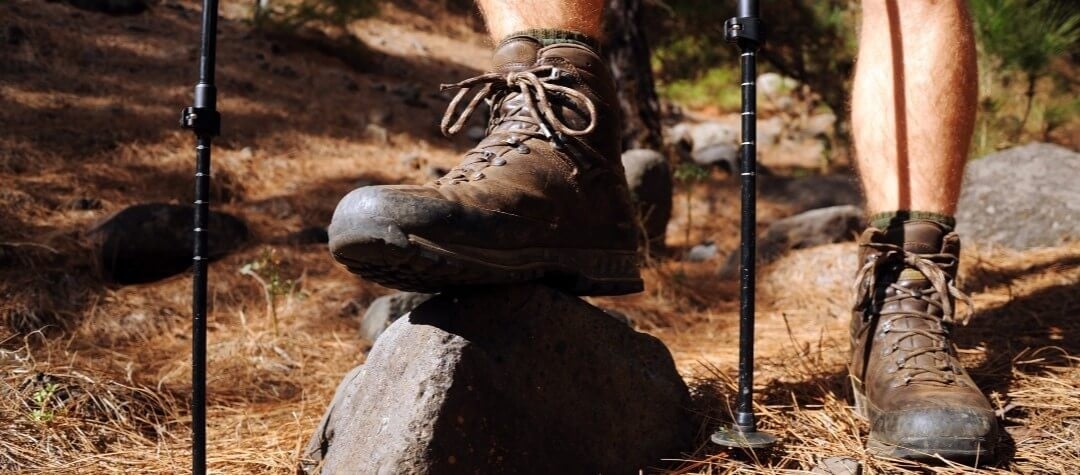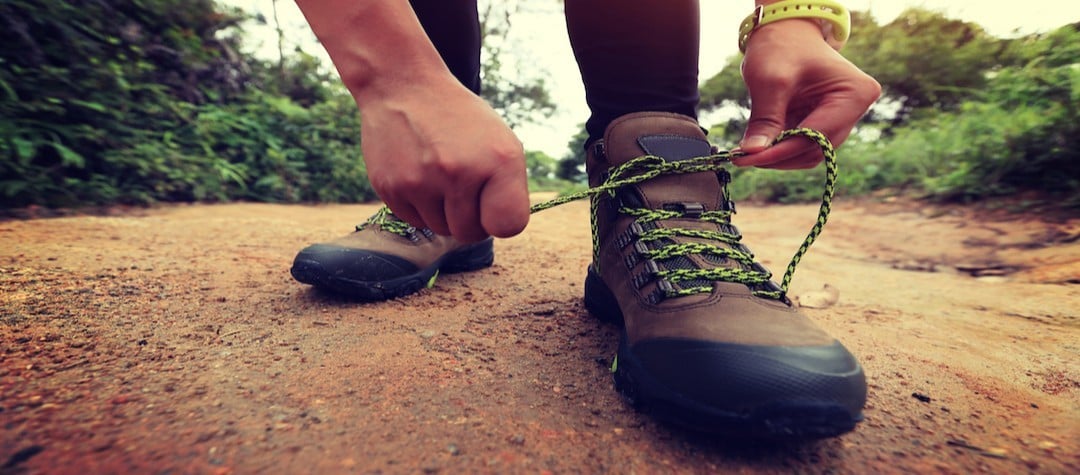Choosing the right clothing can be the difference between an enjoyable walk and a blister-ridden limp. Here’s our realbuzz guide to what you need.
It’s really important to have the correct clothing - as you never know how the weather conditions and terrain might affect your walk. Taking some time to prepare and buy the right kit and gear beforehand will save you lots of headaches in the long run. Start with your footwear...
Footwear
Nothing can ruin your walk more than an ill-fitting pair of boots! If you are taking up hill walking for the first time then it is best to choose comfort over durability. You can then invest in a tougher, longer lasting pair once you know you enjoy hill walking and once your feet have toughened up.
Fabric boots offer great comfort, are lightweight and are also fully waterproof, but will not be as durable or long lasting as traditional leather ones. Make sure you take the time to visit a reputable outdoor retailer who offers a specialist service. There is a bewildering array of boots available and experienced staff will guide you to the right choice based on your intended walking activities. From the point of view of budget, it can pay to to select a good ‘all year round boot’. Always ‘wear your boots in’ gradually by going on short distance walks first and then increasing the distance.
Socks
All your hard earned money spent on boots will be wasted if you don’t back it up by investing in good quality socks. An eternal debate still goes on about the benefit of wearing two pairs (one thin ‘liner’ pair and a thicker outer pair) or just one thick pair.
A thin liner sock will, in theory, channel sweat away from your foot, keeping it dry and also add another layer to absorb friction. Both reduce the chance of developing blisters. Good hiking socks will offer padding in the ‘impact areas’ i.e. the heel and toe, but be thinner elsewhere to allow the movement of sweat away from the foot.
Always avoid cotton as it clings to sweat moisture, increasing the chance of blisters. Any moisture will also cool rapidly when your activity stops, increasing the chances of cold feet or in extreme conditions, frostbite. For wet weather hiking, invest in a pair of gaiters which prevent rain and snow from getting in at the top of the boot and also protect the upper boot from wear and tear. A decent pair can be relatively inexpensive. However, it is worth considering a pair with a ‘venting’ flap to allow heat to escape.
Layering
Generally all outdoor clothing (including footwear) adheres to the ‘layering system’. It is often regarded as a three layer system, although there can be exceptions to the rule.
- The ‘base layer’, or the layer worn next to the skin, draws sweat away. It is essential to leave the skin dry. In cold conditions any moisture will rapidly cool once your activity stops, leaving you uncomfortably cold or in extreme conditions at risk of hypothermia. That base layer picks sweat up from the skin and actively moves it into the next layer of clothing.
- The ‘mid-layer’ is worn over the base layer and its primary function is insulation or conservation of heat energy. It is most commonly a ‘fleece’ type garment. Another function is to allow sweat vapour picked up by the base layer to continue its journey away from the skin and ultimately to the outer layer where it will evaporate. Mid-layers vary in thickness and composition and your selection of garment will be determined by the type of activities you will be doing. Also, it can be warmer and more versatile to wear two thinner mid-layers rather than one thick one.
- The third or ‘outer layer’ performs two important tasks. Since the base and mid-layers are not waterproof, its essential function is to prevent the elements coming into contact with the other layers. Secondly, and just as importantly, the outer layer needs to allow as much of the sweat transported away from the skin by the base and mid-layers to escape into the atmosphere and evaporate.
As we’ve mentioned, any trapped sweat moisture will rapidly cool once activity stops leaving you uncomfortably cold or even at risk of hypothermia. Although referred to as a ‘three layer’ system, the layering system is versatile and not all of the layers will always be worn at any one time. If it is not raining then the outer waterproof layer may be stowed in a bag or during periods of intense physical activity, mid-layers may be removed and carried.
What to avoid
Always avoid cotton! It clings or holds on to sweat making it unsuitable for outdoor activities. And stay away from denim. Like cotton, it ‘holds on’ to moisture once it is wet – a real no-no.
Top shopping tips:
Jackets
It is essential to choose a jacket that is waterproof, while still allowing the sweat generated by your body to escape.
Gortex is by far the most popular choice of fabric and is available in different forms. Gortex Paclite is extremely thin, creating extremely lightweight garments which also allow sweat to escape very efficiently. Paclite garments are highly suited to activities where weight is crucial and you break out into a real sweat, for example, adventure racing, orienteering or mountain biking. But remember that for activities other than day walks with very light day rucksacks, Paclite is not very durable and won’t withstand heavy backpacks on the shoulders.
For general hiking, select a jacket made from standard Gortex, Gortex XCR or similar material from another manufacturer. When selecting a hiking jacket, consider features such as reinforced shoulders to avoid abrasion from backpack straps.
Other features to consider include location of hand pockets — if you will be wearing a harness for scrambling or mountaineering then select a jacket with chest pockets that will still be accessible. The hood is a very important feature of any jacket and you should ensure that it is easily adjustable and will accommodate a mountaineering helmet if you are likely to use one.
Also look out for ‘pit-zips.’ These are zippers located in the underarm area of the jacket which allow you to let out heat and sweat and regulate your temperature.
Trousers
When choosing waterproof over-trousers for hiking, it is good advice to select a pair with full length zips. These allow you to easily pull them on on while wearing walking boots, crampons, snow shoes and even skis.
For hill walking do not select Gortex Paclite trousers. Even though they are light to carry, they will not be very durable. Choose Gortex or Gortex XCR or trousers made from a similar fabric.
Hats and gloves
Pay particular attention to protecting your extremities (your fingers, nose and ears), from the elements. Approximately 60 per cent of body heat is lost through the head, so in cold conditions put a hat on. Also, remember in hot conditions it is just as important to wear a hat to protect your head from the sun.
For the hands, mitts offer better insulation and warmth than gloves but offer limited movement. However, some mitt designs have a movable flap allowing fingers to be exposed for dexterous work. Invest in an insulating pair of fleece gloves that can be protected by a thin pair of weatherproof outer gloves or mitts.














